Matrox TripleHead2Go Review
Ever since I first saw “Surround Gaming” using a Matrox Parhelia video card, I’ve been a huge fan. But sadly over the years, the Parhelia’s ability to perform with the latest games fell behind other graphics cards. Recently, I discovered that Matrox had developed the TripleHead2Go, a small external device known as a Graphics eXpansion Module. It enables you use three 19" monitors with a combined resolution of up to 3840x1024, with your PC (or laptop even) if that system only supports a single display output.
Well, was I excited or what? (I was. ^_^)
It seemed that Matrox had developed the one thing I had been dreaming of, for a long time. That is, the ability to play games in TripleHead (“Surround Gaming”) on pretty much any hardware... including SLi. After contacting Matrox they were kind enough to send me a unit to review for the forum. It arrived a few days ago and I've been in heaven ever since.
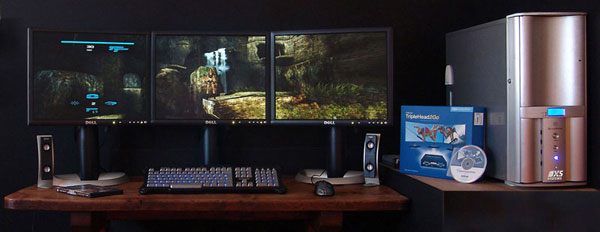
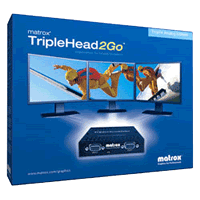
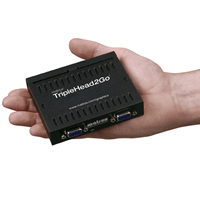
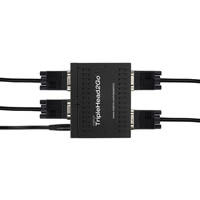
Desktop Usage
Windows spans the three screens beautifully without any mouse lag, and all the usual Window’s features work in the normal fashion. The only difference is that I now have three times the room for everything. The potential for increased productivity, by utilizing this huge workspace, is very apparent. I can have multiple applications open: MS Word on screen one, Internet Explorer on screen two and Outlook Express on screen three.
Or, I can have one application span the whole desktop - great for preparing widescreen screenshots for the forum. In Photoshop, for instance, you can have the various screenshots, photos, tools and previews on the different screens. Clearly the likes of game developers and CAD users will find huge benefits with this “Surround Design”, as Matrox calls it.
Configuring Surround Gaming
All the games on Matrox’s list of Supported Games (that I tried) were very easy to set up using the supplied Matrox Surround Gaming Utility . And, the utility has more that 100 titles predefined.
Most of us widescreen users are familiar with having to hack/edit configuration files: .ini and .cfg files. Well the SGU takes this one step further by creating a way to automatically configure the games to work in TripleHead from predefined “recipes,” so to speak. It supports user-defined updates of Surround Gaming "recipes" for games not on the Matrox Surround Gaming list. In this way, Matrox is enabling the user community to add support for additional games directly and contribute these back to the community. I actually managed to create a “recipe” for Splinter Cell – Chaos Theory a game not on the Matrox list, and the game works perfectly in TripleHead.
Just choose the TripleHead resolution for the game you want to run in Surround, and as I say, the SGU automatically configures the game for the best Surround experience. The available resolutions are: 3840x1024, 3072x768, 2400x600, and 1920x480. So depending on your hardware you can choose the best resolution to get the best in-game performance.
I see this tool could also be very useful for widescreen users as those “recipes” could provide the Widescreen Gaming community with a much easier/automated way to hack/edit those configuration files as the recipes don’t have to contain TripleHead resolutions. They could just as easily be widescreen resolutions as the usual things apply to Surround Gaming that applies to Widescreen Gaming … resolution/FOV/aspect ratio, etc. This is something I will have to discuss further with Matrox.
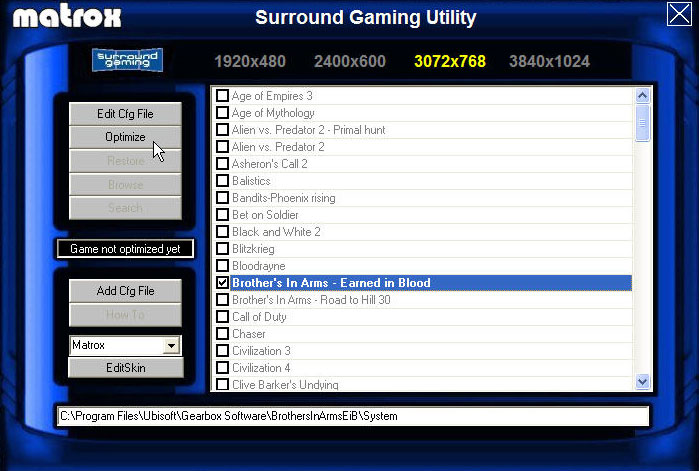
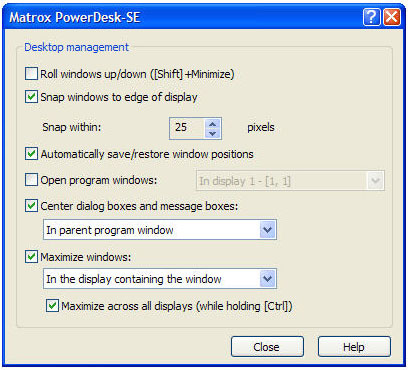
Scaling and Image Quality
The TripleHead2Go has a top resolution limit of 3840x1204, so I have been running all the games I tested at 3x1280x1024 (with at least 2x anti-aliasing) on my Dell 2001FP monitors which each have a native resolution of 1600x1200. I can honestly say that if you didn't know the resolution was up-scaled you probably wouldn't be able to tell - and they all looked great.
I ran one or two of the games at 1920x480 just to see how ugly it would be at the lowest resolution the TripleHead resolutions. And again, it really didn't look that bad (although I did turn up the anti-aliasing). Up-scaling on today's monitors really isn't bad, as the dot pitches on most monitors are very fine. I would go so far as to say that it can actually improve the look of some games by softening their hard edges and "look." I would suggest to anyone that hasn't tried up-scaling on there monitors to give it a try, you may be surprised at the quality.
Matrox TripleHead2Go Review - Impressions & Screenshots
I mentioned in my opening paragraph that I am familiar with Surround Gaming having owned a Parhelia for quite a few years and so I thought I knew what to expect but I was wrong and boy was I blown away. My system is quite a high spec: AMD FX-60 and two Nvidia 512Mb 7900GTX’s in SLi. I was pretty much able to run every game I tried at max settings surrounding me in a visual delight, something I struggled to do on my Parhelia even in its heyday.
The buzz word “immersive” is often banded around by game developers and screen manufacturers but here with the TripleHead2Go it really is the best way to describe the Surround Gaming experience. It’s like having my own mini IMAX just for gaming, and I won’t be sending this unit back to Matrox (he-he).
I have found when I have shown people screenshots from my old Parhelia set up, they would remark at how the image on side screens often looked stretched. They then assume that this would be distracting when playing games - a wrong assumption IMHO. It is something you simply have to experience, but let me try to explain.
When you are actually playing a game, as opposed to looking at a static screenshot, your focus is on the centre screen and it is exactly as it would be for single screen gaming. The side screens add to the immersion by filling up your peripheral vision. You are not looking directly at them when you are playing in Surround, and they look correct for peripheral vision. The whole gaming experience is enhanced by the sides screens - not degraded by them.
Another thing to note is that in the HUD stretches in some games - something that is all too familiar to us widescreen users. Most of us don’t mind, or put up with it, as we would prefer the enhanced view with a stretched HUD, than 4:3 with no stretched HUD. The same pretty much goes for Surround Gaming. The Triple Head experience is so good, so impressive, that I only noticed the HUD stretching when I look back at the screenshots.
It is important to note that games that are not configurable for surround can be played as normal on the centre screen as if you only had one screen and the side screens go into standby.


Screenshots
From Matrox’s list of Supported Games and use the SGU application from Matrox. All worked beautifully apart from Quake 4 which has an aspect ratio issue and so the in game view looked a bit squashed down. Click on the thumbnails for full-sized versions.
Games (in order) are: Brothers in Arms: Earned in Blood, Elder Scrolls IV: Oblivion, Far Cry, F.E.A.R., Quake 4, UT2004, HL2: Lost Coast, CS: Source, World Racing 2, Moto GP 3, Medal of Honor: Pacific Assault, Need For Speed: Most Wanted, Splinter Cell: Chaos Theory, Tomb Raider: Legend.
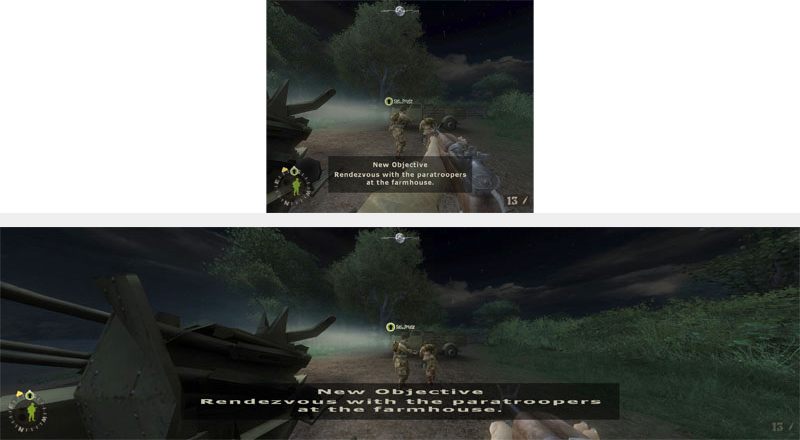
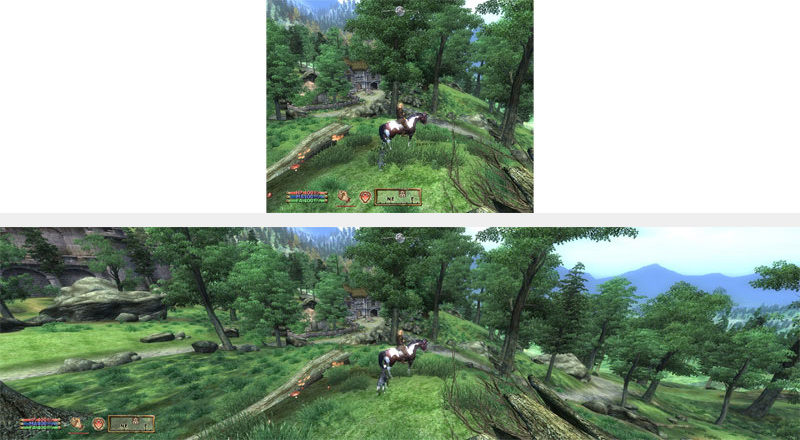
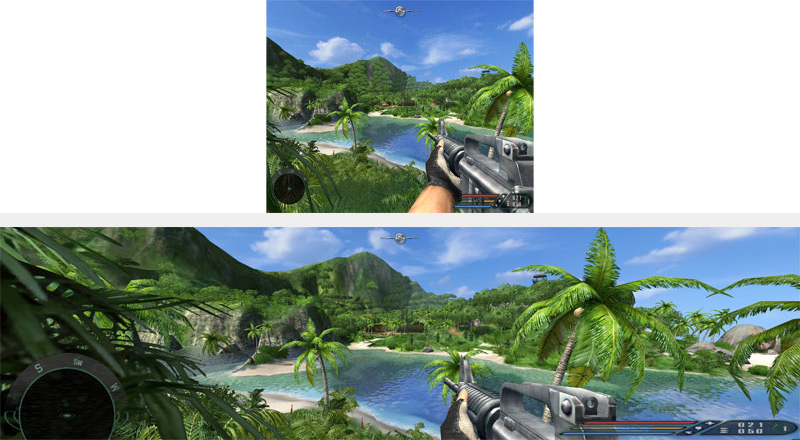

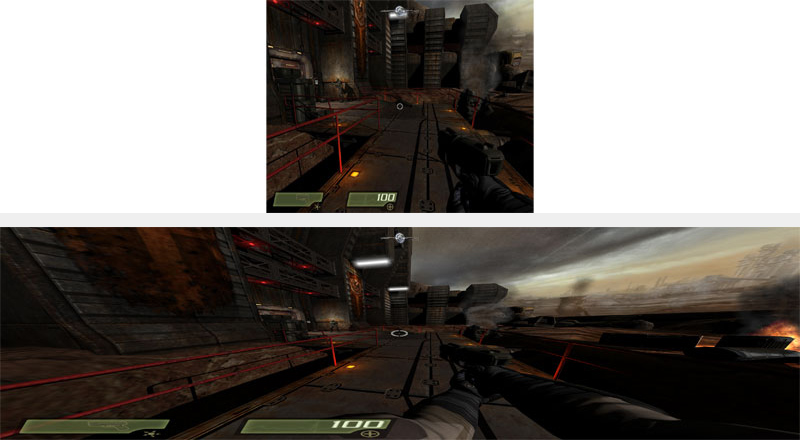
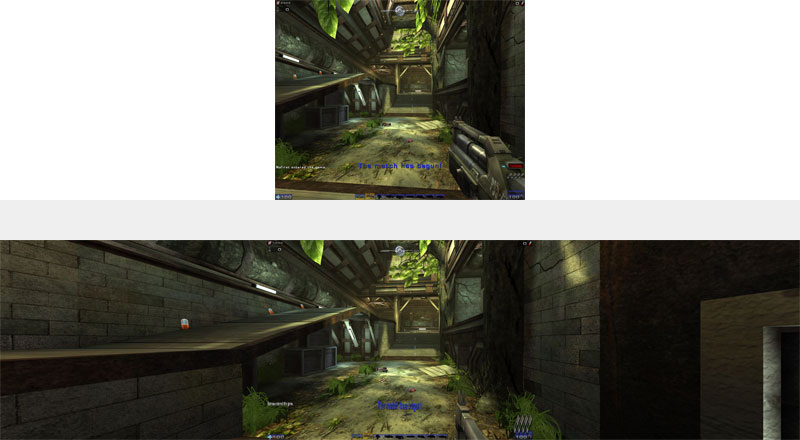
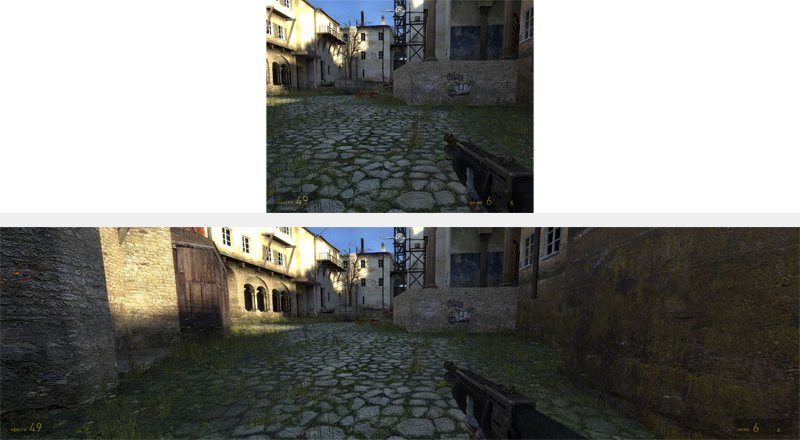
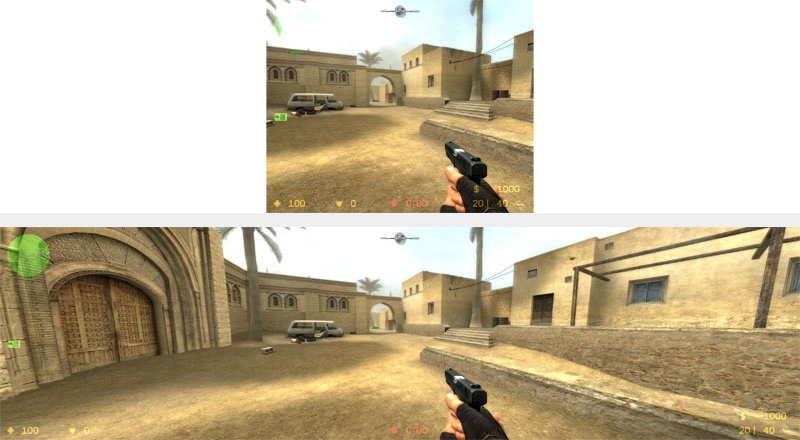

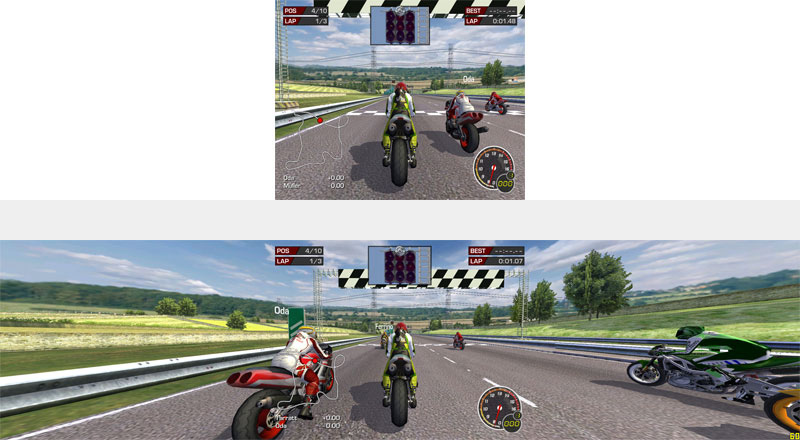
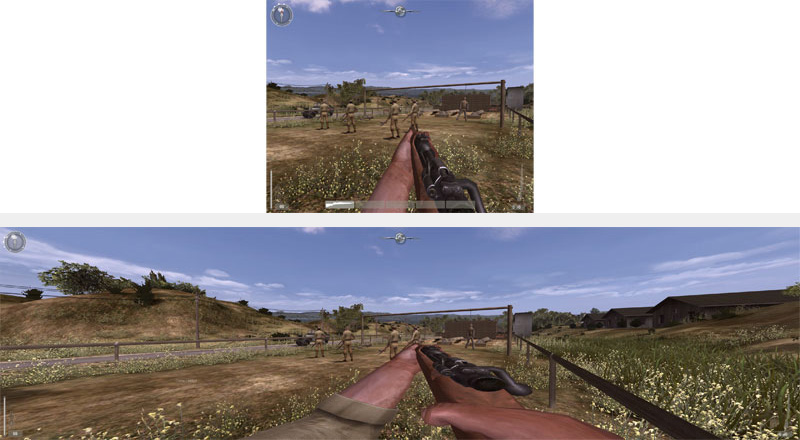
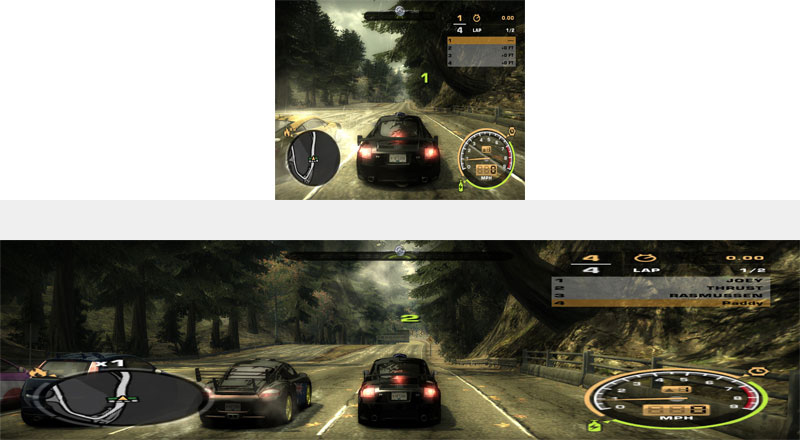
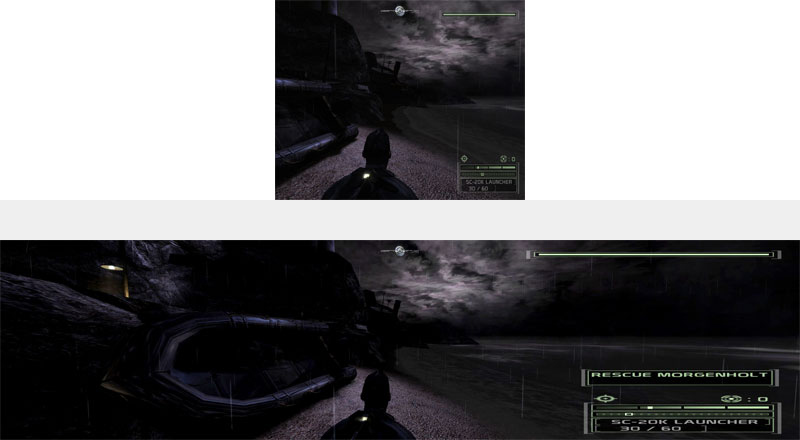
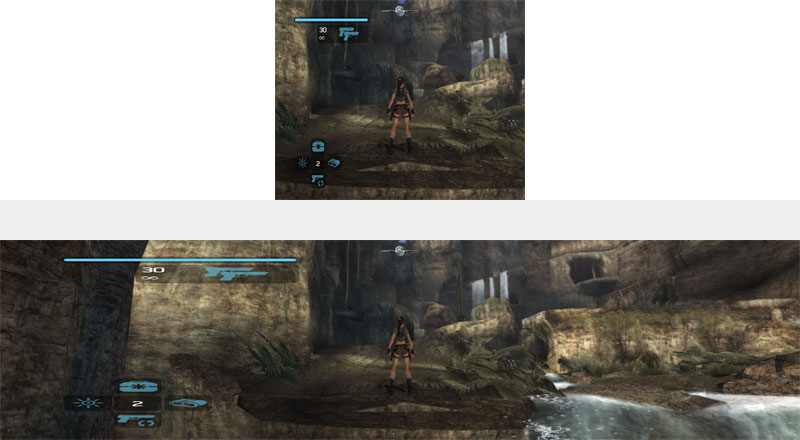
Matrox TripleHead2Go Review - Conclusions & The Future
As widescreen users we understand and appreciate the benefits of the extra view we have, and how it enhances our gaming experience. The TripleHead2Go only enhance this further. Yes there are some issues. But as it happens, they are (for the most part) the same issues that we have with games and "regular" widescreen gaming.
...I would buy nigh on every game that works in TripleHead just to try them out - that is how good this is!..."
I can’t wait to replay all the games I have that work with the TripleHead2Go, and can’t wait to find out what future games will work. As we all know there are one or two developers/publishers that seem to have an inability to think outside the 4x3 box, but I believe things are changing. With top games like Elder Scrolls IV: Oblivion, F.E.A.R and Half Life 2 happily working in widescreen, and now in surround with the TripleHead2Go, the “box thinkers” in the game dev/pub world must be feeling a little inadequate, or just plain lazy. We will just have to wait and see if they decide to accommodate us in the future.
I might buy games for my "regular" widescreen set up if the setup/hack isn't too involved. But, I would buy nigh on every game that works in TripleHead just to try them out - that is how good this is!
Matrox tells me that they are looking into the possibility of using this with widescreens - but there are no promises. Two 4:3 monitors on the sides and a widescreen in the middle would (for me, at least) be the ultimate and the best of both worlds.
Also, there are some issues with the maximum resolutions that ATI GPU’s can do but not having an ATI setup I was unable to test or look in to this. But, Nvidia cards (even in an SLi configuration) work without a hitch.
To it sum up …
The TripleHead2Go provides a unique and easy way to add multi-display capability to your system. The product simply connects to the external monitor connector of your computer so there are no parts to install, and no hardware or software is replaced. Plus, your TripleHead experience will only improve as you upgrade your GPU of choice. For the most stunning and immersive way to experience your games this is a must. Fore more information, click on the Matrox logo below.